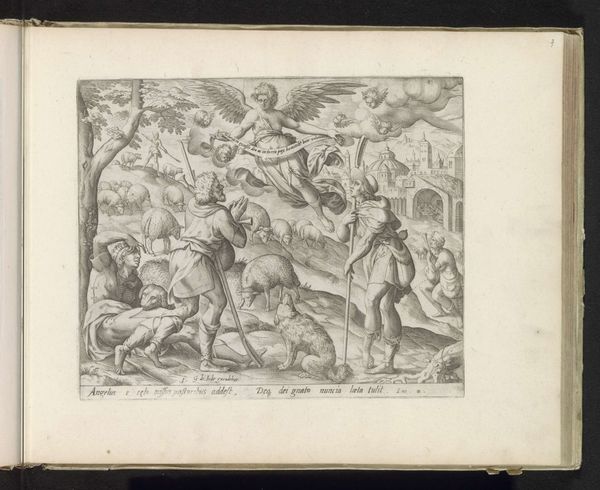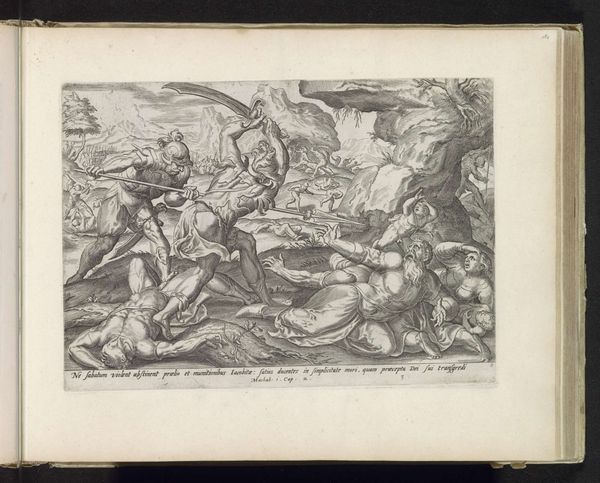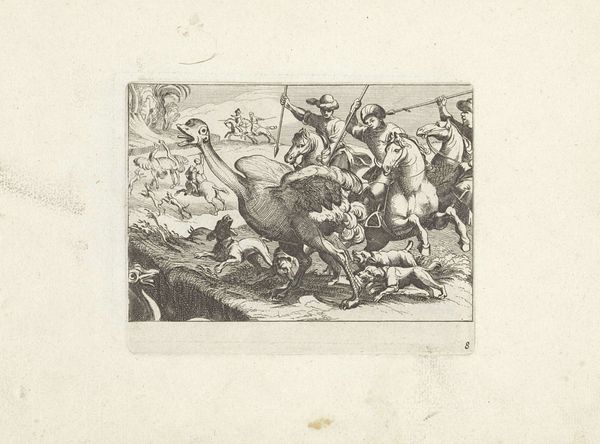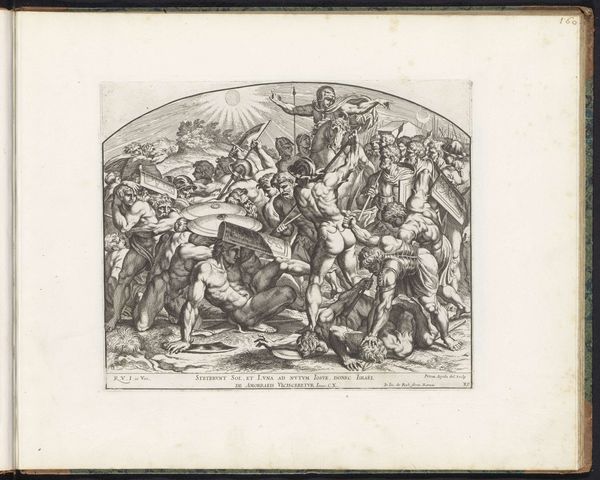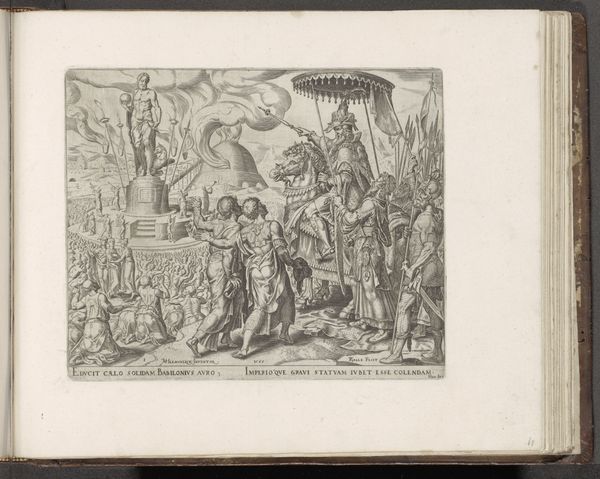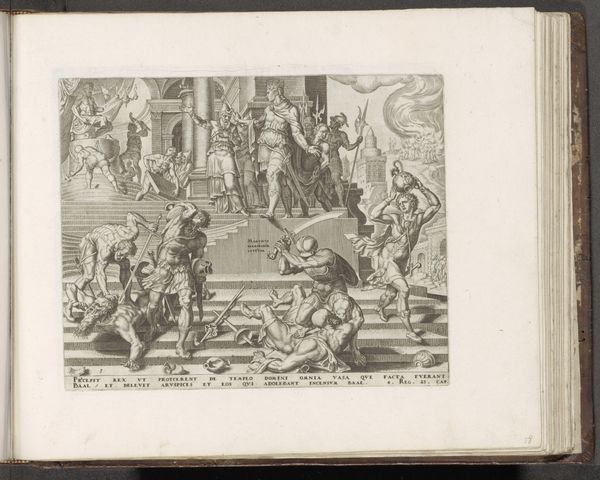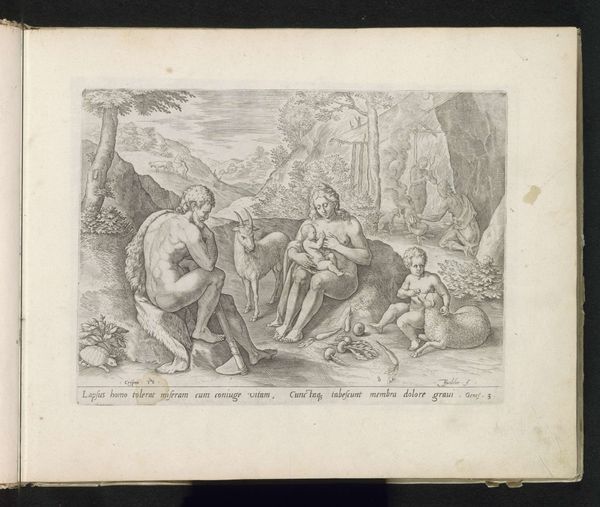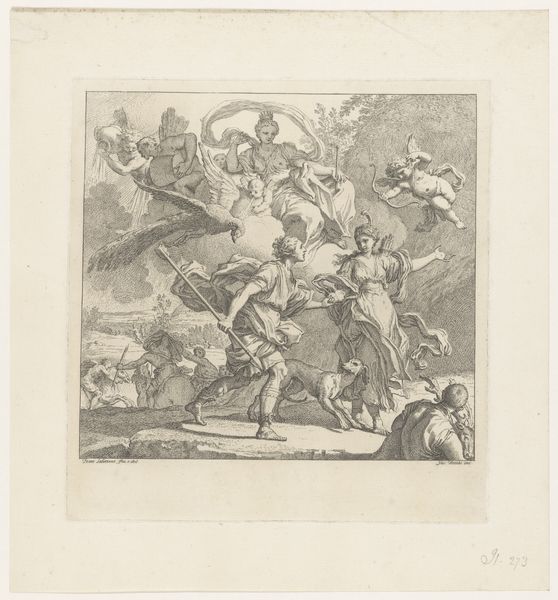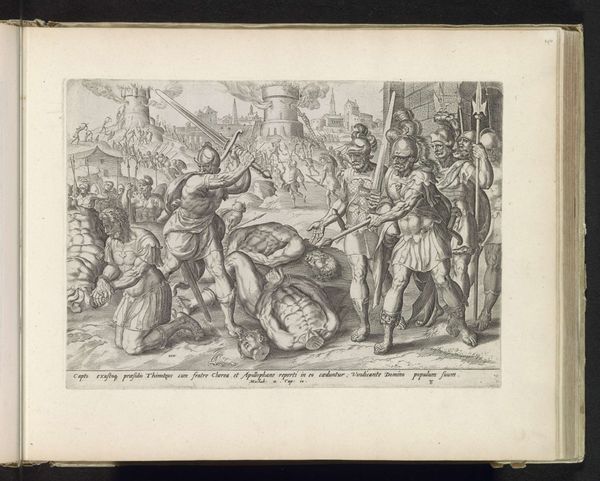
print, engraving
# print
#
mannerism
#
figuration
#
history-painting
#
engraving
Dimensions: height 211 mm, width 254 mm
Copyright: Rijks Museum: Open Domain
Curator: Here we have a print titled "Ontmoeting en de reis van de drie koningen," or in English, "The Meeting and the Journey of the Three Kings," created by Johann Sadeler I in 1585. Editor: The composition is instantly striking; it's a whirlwind of figures, horses, and fantastical landscapes rendered in incredibly intricate detail. It conveys a sense of frenetic energy despite the stillness inherent in the engraving. Curator: This engraving, typical of the Mannerist style, uses exaggerated forms and complex compositions to depict the journey of the Magi. It reflects the religious and political turmoil of 16th-century Europe, with its focus on divine intervention in earthly affairs. The scene presents the three kings as powerful rulers from the East, recognizing the sovereignty of the Christian godhead. Editor: The image's symbolism resonates profoundly. The magi, figures historically understood as intellectuals from diverse backgrounds, suggest themes of inclusion and cross-cultural acknowledgement—concepts which might even subvert our traditional understanding of the biblical narrative. I’m intrigued by what appears to be a serpent and an angel with raised arms on the right. Can you explain those? Curator: Indeed! In terms of period iconology, the serpent traditionally stands for chaos or the Old Order being vanquished; meanwhile the angel functions as a kind of signifier that their arrival fulfills Biblical prophecy. Their placement to the right foreground emphasizes the ideological justification of social hierarchy within European courts as part of divine intervention, reflecting colonialist ideology of the period. Editor: Given that context, how would we interpret those regal garments and noble horses through a modern-day lens? Surely there's something there about access, privilege and the visual language of power, even from afar. Curator: Exactly. Considering the piece as part of Rijksmuseum collection is critical; what narratives do museums implicitly amplify when curating historical images like these? Understanding the symbolic representation alongside this print’s production enables exploration into how socio-economic structures became intrinsically intertwined with belief systems over centuries, and to what purpose. Editor: The density of the composition leaves much to dissect! This exploration really illuminates not just art history, but how these visuals perpetuate deeply embedded ideologies that must be understood today. Curator: I think considering historical context and current power relations gives depth and meaning, making for more considered dialogues with the piece itself.
Comments
No comments
Be the first to comment and join the conversation on the ultimate creative platform.
